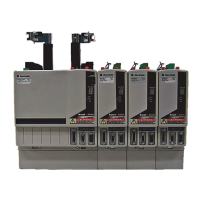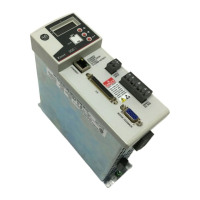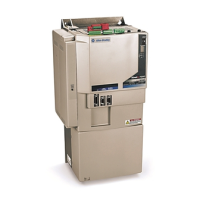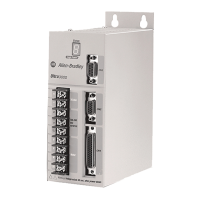Rockwell Automation Publication 2094-UM001J-EN-P - March 2017 249
Configure the Load Observer Feature Appendix D
d. Decrease the gains by using the previous equations with N = 0.5.
A typical range of values for various integral gains are given:
•0 ≤ Load Observer Integral Gain ≤ Load Observer Proportional
Gain/4
•0 ≤ Velocit y Integral Gain ≤ Velocity Proportional Gain
2
/4000
e. If the Low-pass Output Filter is enabled, a typical range of values for
the Low-pass Output Filter Bandwidth are given:
• Rigid: Low-pass Output Filter Bandwidth ≥ Velocit y
Proportional Gain x 2/(2pi)
• Compliant: Low-pass Output Filter Bandwidth ≥ Velocit y
Proportional Gain x 5/(2pi)
4. Manually tune the position loop.
a. Restore the Position and Feedforward Gains to the original values to
re-enable the position loop.
b. While Jogging the axis and monitoring the Torque Reference trend,
incrementally increase the following gains simultaneously and stop
when the Torque Reference begins to become oscillatory or unstable:
• Position Proportional Gain = Position Proportional Gain x N
• Position Integral Gain = Position Integral Gain x N
2
c. Decrease the gains by using the previous equations with an N = 0.5.
A typical range of values for the Position Integral Gain is given:
0 ≤ Position Integral Gain ≤ Position Proportional Gain
2
/4000

